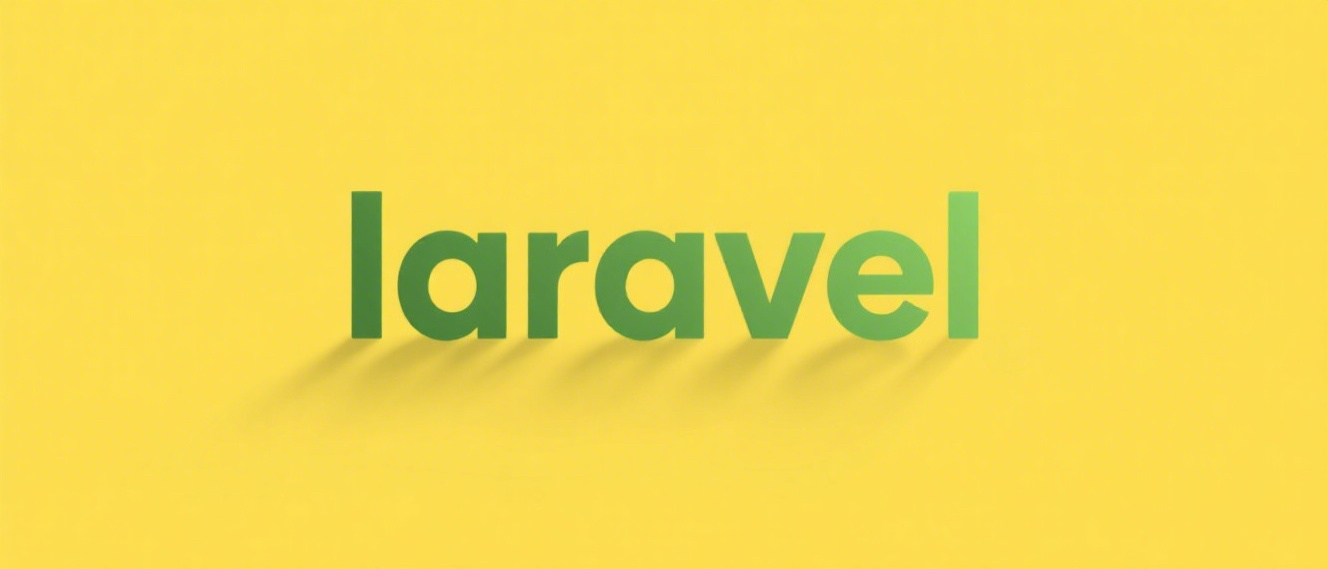Protecting your application with Laravel security features
Laravel provides robust security features to protect applications from common web vulnerabilities. Use built-in CSRF protection by including @csrf in all POST/PUT/PATCH/DELETE forms and avoid disabling it unless necessary, using API tokens instead. 1. Leverage Eloquent ORM or Query Builder for database queries to prevent SQL injection via parameter binding. 2. Sanitize user input using validation rules like 'email' => 'required|email' and middleware such as TrimStrings and ConvertEmptyStringsToNull for consistent data. 3. Secure routes with Laravel’s authentication and authorization system using Gates and Policies, ensuring only authorized users can perform specific actions, and apply middleware like auth or can to restrict access effectively.

Laravel comes with a ton of built-in security features that help protect your application from common web vulnerabilities. If you're building something serious, relying solely on basic setup won't cut it — you need to make use of what Laravel offers under the hood.

Use Built-In CSRF Protection
One of the most important things Laravel does automatically is handle CSRF protection. Every time you create a form using Blade’s @csrf directive, Laravel adds a hidden input field with a token that verifies the request came from your site and not from a malicious third-party page.

- Make sure every POST/PUT/PATCH/DELETE form includes
@csrf - Don’t disable CSRF protection unless you have a very specific reason (like public APIs — but even then, use API tokens instead)
It's easy to forget this when writing custom forms or working with JavaScript-based submissions, so double-check your code before pushing to production.
Leverage Eloquent for Database Queries
Using raw SQL queries opens the door to SQL injection attacks if you’re not careful. Laravel’s Eloquent ORM and Query Builder help prevent that by default because they use parameter binding behind the scenes.

For example:
// Safe query using Query Builder
User::where('email', $request->input('email'))->first();This way, any user input gets properly escaped before being sent to the database. Avoid concatenating variables directly into SQL strings unless you absolutely have to — and even then, always sanitize and validate first.
Sanitize User Input with Validation and Middleware
Validation is one of the easiest ways to stop bad data at the door. Laravel’s Form Request and controller validation helpers are solid tools.
Use rules like:
'email' => 'required|email''password' => 'required|min:8'
Also, don’t forget to clean up inputs before saving them. For instance, trimming whitespace or stripping HTML tags where appropriate can prevent unexpected behavior later.
You can also combine validation with middleware like TrimStrings and ConvertEmptyStringsToNull, which come enabled by default in Laravel. These help keep your data consistent without extra effort.
Secure Your Routes with Authentication and Authorization
Most apps need some kind of access control. Laravel provides a simple but powerful system using Gates and Policies.
Let’s say you want only the owner of a post to be able to edit it:
Gate::define('update-post', function ($user, $post) {
return $user->id === $post->user_id;
});Then in your controller or Blade views, you can check:
if (Gate::allows('update-post', $post)) { ... }Also, make sure your routes are protected using middleware like auth or can. For example:
Route::put('/posts/{post}', [PostController::class, 'update'])->middleware('can:update-post,post');This ensures users can’t just guess URLs and perform actions they shouldn’t.
That’s basically it. Laravel gives you strong tools out of the box — but you still need to use them right. Keep your forms safe, your queries clean, your inputs validated, and your routes locked down.
The above is the detailed content of Protecting your application with Laravel security features. For more information, please follow other related articles on the PHP Chinese website!

Hot AI Tools

Undress AI Tool
Undress images for free

Undresser.AI Undress
AI-powered app for creating realistic nude photos

AI Clothes Remover
Online AI tool for removing clothes from photos.

Clothoff.io
AI clothes remover

Video Face Swap
Swap faces in any video effortlessly with our completely free AI face swap tool!

Hot Article

Hot Tools

Notepad++7.3.1
Easy-to-use and free code editor

SublimeText3 Chinese version
Chinese version, very easy to use

Zend Studio 13.0.1
Powerful PHP integrated development environment

Dreamweaver CS6
Visual web development tools

SublimeText3 Mac version
God-level code editing software (SublimeText3)
 What are Repository Contracts in Laravel?
Aug 03, 2025 am 12:10 AM
What are Repository Contracts in Laravel?
Aug 03, 2025 am 12:10 AM
The Repository pattern is a design pattern used to decouple business logic from data access logic. 1. It defines data access methods through interfaces (Contract); 2. The specific operations are implemented by the Repository class; 3. The controller uses the interface through dependency injection, and does not directly contact the data source; 4. Advantages include neat code, strong testability, easy maintenance and team collaboration; 5. Applicable to medium and large projects, small projects can use the model directly.
 How to use subqueries in Eloquent in Laravel?
Aug 05, 2025 am 07:53 AM
How to use subqueries in Eloquent in Laravel?
Aug 05, 2025 am 07:53 AM
LaravelEloquentsupportssubqueriesinSELECT,FROM,WHERE,andORDERBYclauses,enablingflexibledataretrievalwithoutrawSQL;1.UseselectSub()toaddcomputedcolumnslikepostcountperuser;2.UsefromSub()orclosureinfrom()totreatsubqueryasderivedtableforgroupeddata;3.Us
 How to create a RESTful API with Laravel?
Aug 02, 2025 pm 12:31 PM
How to create a RESTful API with Laravel?
Aug 02, 2025 pm 12:31 PM
Create a Laravel project and configure the database environment; 2. Use Artisan to generate models, migrations and controllers; 3. Define API resource routing in api.php; 4. Implement the addition, deletion, modification and query methods in the controller and use request verification; 5. Install LaravelSanctum to implement API authentication and protect routes; 6. Unify JSON response format and handle errors; 7. Use Postman and other tools to test the API, and finally obtain a complete and extensible RESTfulAPI.
 Laravel MVC: architecture limitations
Aug 03, 2025 am 12:50 AM
Laravel MVC: architecture limitations
Aug 03, 2025 am 12:50 AM
Laravel'simplementationofMVChaslimitations:1)Controllersoftenhandlemorethanjustdecidingwhichmodelandviewtouse,leadingto'fat'controllers.2)Eloquentmodelscantakeontoomanyresponsibilitiesbeyonddatarepresentation.3)Viewsaretightlycoupledwithcontrollers,m
 How to handle recurring payments with Laravel Cashier?
Aug 06, 2025 pm 01:38 PM
How to handle recurring payments with Laravel Cashier?
Aug 06, 2025 pm 01:38 PM
InstallLaravelCashierviaComposerandconfiguremigrationandBillabletrait.2.CreatesubscriptionplansinStripeDashboardandnoteplanIDs.3.CollectpaymentmethodusingStripeCheckoutandstoreitviasetupintent.4.SubscribeusertoaplanusingnewSubscription()anddefaultpay
 How to schedule Artisan commands in Laravel
Aug 14, 2025 pm 12:00 PM
How to schedule Artisan commands in Laravel
Aug 14, 2025 pm 12:00 PM
Define the schedule: Use Schedule object to configure Artisan command scheduling in the schedule method of the App\Console\Kernel class; 2. Set the frequency: Set the execution frequency through chain methods such as everyMinute, daily, hourly or cron syntax; 3. Pass parameters: Use arrays or strings to pass parameters to the command; 4. Scheduling the shell command: Use exec method to run system commands; 5. Add conditions: Use when, weekdays and other methods to control the execution timing; 6. Output processing: Use sendOutputTo, appendOutputTo or emailOutputTo to record or
 How to build a real-time chat application with Laravel?
Aug 04, 2025 pm 01:03 PM
How to build a real-time chat application with Laravel?
Aug 04, 2025 pm 01:03 PM
SetupLaravelandinstalldependenciesincludingLaravelSanctumandLaravelEcho.2.ConfigurePusherasthebroadcastdriverin.envandenabletheBroadcastServiceProvider.3.CreateaMessagemodelwithamigrationthatincludesuser_idandmessagefields.4.Implementauthenticationus
 What is the Laravel application request lifecycle?
Aug 05, 2025 pm 05:48 PM
What is the Laravel application request lifecycle?
Aug 05, 2025 pm 05:48 PM
Laravel's request life cycle goes through 7 stages from user-initiating a request to response return: 1. The request starts with public/index.php, loads the automatic loader and creates an application instance; 2. The HTTP kernel loads configuration, environment and service providers through boot classes; 3. The request handles security, session and other tasks through global middleware; 4. The router matches the request URI and method, executes the corresponding closure or controller, and applies routing middleware; 5. The controller instantiates through dependency injection, executes logic and returns views, JSON, redirects and other responses; 6. The response is encapsulated as a SymfonyResponse object and outputs through $response->send(); 7. Response sends







